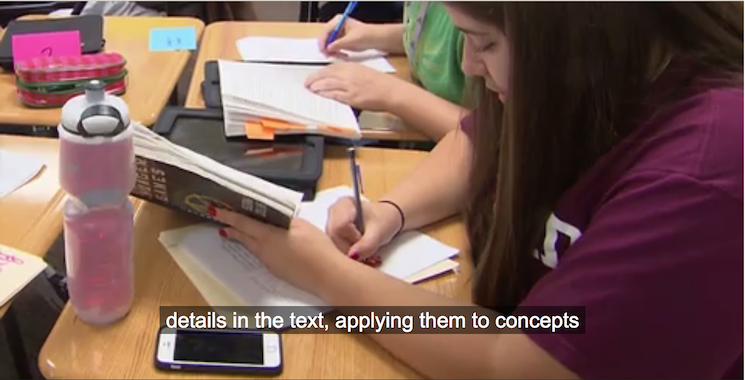 The Hunger Games trilogy continues to be an attention getter in grades 7-12. Students in the adolescent years are often drawn to dystopian themes and stories (think “The Giver”, Shirley Jackson’s “The Lottery,” the Divergent series, and so many YA novels of the past 15 years – even Harry Potter!). If there are movies as well as books, student engagement can be even greater.
The Hunger Games trilogy continues to be an attention getter in grades 7-12. Students in the adolescent years are often drawn to dystopian themes and stories (think “The Giver”, Shirley Jackson’s “The Lottery,” the Divergent series, and so many YA novels of the past 15 years – even Harry Potter!). If there are movies as well as books, student engagement can be even greater.
I’ve been intrigued by a Hunger Games-related Teaching Channel video from the wonderful Sarah Wessling since it first appeared in 2015. (So have many teachers, as you can tell from the comments!)
Analyzing Texts with Storyboards has students delve into what “lies beneath” the storyline of The Hunger Games from the perspective of reality TV producers who might be looking for show ideas.
Sarah begins, as she always does in her lessons, by going to her six classroom Common Core paint buckets so students can identify the “skinny” standards that are in play in the lesson.
As she tells the students in the video:
“So today these are the three things that your brains are going to have to do: your brains are going to have to use logic, they’re going to have to close read, and you’re going to have to determine themes or concepts.”
To help her 10th grade ELA students analyze the text, Sarah has her student teams use storyboarding (you can find templates on the internet – here’s one example) as a focusing and reflection tool. As you’ll see, Sarah facilitates but avoids being directive.
In her lesson plan accompanying the eight-minute classroom video, Sarah explains that:
This lesson occurs within the first three weeks of our school year. It’s placement in the course is crucial because our larger goal of this very short unit is to practice reading beyond the “surface story” and into the “real story.” In order to give students an opportunity to practice going “beyond the surface” I wanted to take the surface away.
In other words, most students have already read Hunger Games and all of them have seen the movie. By working with an already familiar book, our learning goals center not around understanding or comprehending, but on the processes and skills necessary to read closely.
Remember that most Teaching Channel videos are accompanied by transcripts and many also share lesson plans and other resources. To be able to download these materials, you need to create a free account.
Give it a try!
So: Jump to the page, watch the video, read the informative comments, and check out the transcript and lesson plan available in the right column. I think you’ll find this engaging activity VERY cool. It might be a lesson you want to try early in your school year. As one commenter notes, it can be easily adapted to other familiar novels and stories, like these on TIME’s 100 Best YA Books of All Time list.



0 Comments on "Going Deep with The Hunger Games: Analyzing Texts with Storyboards"